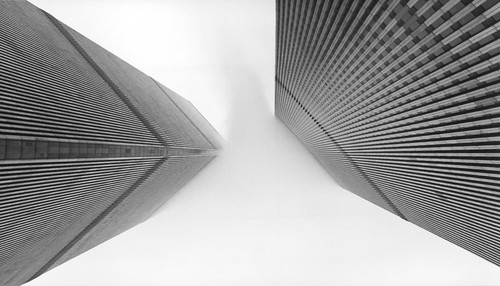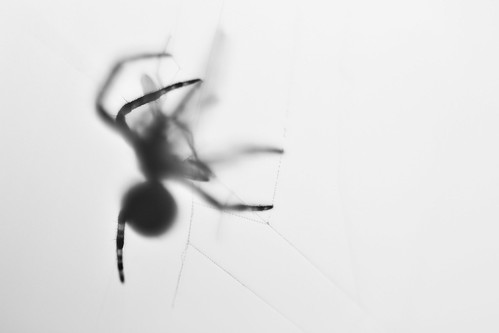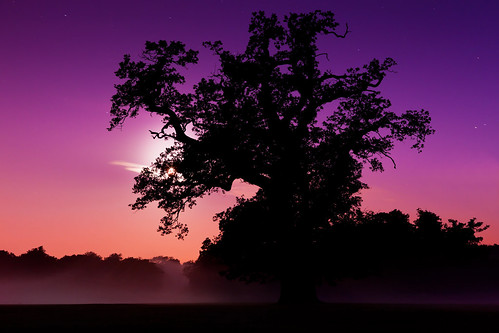Quick re-posting of an older shot, currently enjoying some coverage on the Flickr homepage. Full text and a meditative ramble at Flickr - just click the image. Have a superb day in any event.
Saturday, 23 July 2011
Saturday, 16 July 2011
Strega (Spider Eating Fly)
Significantly nicer on black, if you have a moment to hit "L".
Proof, if any were needed, that I need to practice a little more before straying into the realm of macro. The £4.70 tubes I acquired from eBay are superbly good value, but used with the 50mm f/1.8 without electronic contacts, you are left at a permanent f/1.8 and thus a crazy narrow plane of focus.
I wish I had a back to front sharp shot of this spider eating a fly, but, given that I don't, I do rather like the smokey quality of this one; like a vision into some austere, mist-thronged circle of Dante's hell. This one is shot outside against a bright summer sky. Converted to black and white, but otherwise SOOC.
Tuesday, 12 July 2011
Entangled (Moonlit Mist), Cassiobury Park
Quick one from the weekend, on a first visit to Cassiobury Park. An eerie mist lingering beneath moonlight on a humid, restless evening. As with most of these shots, the colour comes from cloud on the horizon picking up the city's light pollution, against a blue hour sky above.
I hope everyone is well - I've not really been on recently much, looking forward to catching up over the next few days.
Wednesday, 6 July 2011
Light Painting 101
Light Painting, a set on Flickr. Over the last few months I've had some success shooting light paintings. I'm lucky enough to get Flickrmail asking about the basics, and whilst I've got plenty left to learn, here are the things I'd recommend as a starter for ten.
1: Sketch the scene first - Successful light painting means drawing images in the air, without seeing your progress as you go. Meeting this challenge is made much easier the fewer lines you need to draw. Sketching your idea on paper before going out with the camera allows you to simplify the image so that the fewest lines need tracing, and the image will be easier to produce.
2: Use the background - Remember that the light painting itself is just one aspect of the image. A great set of flashlight painted lines are super in themselves, but the magic really happens when you weave them successfully into a background scene that could also stand on its own two feet.
3: Use your body - Especially when drawing human figures, you can use your body to guide you when tracing in the air. Run a test shot, remembering the points of your body where you turn the torch. This makes it much simpler to avoid overlapping lines or distorted scales. Measure movement between positions in clear steps, counting them in your mind so you can repeat and control the process time after time.
4: Use bright torch for lines - A dim torch moved slowly and a bright torch moved quickly both have their pros and cons. I favour a bright torch. This allows swift movements, leaving smoother lines. The danger is that the bright torch causes flare at the end of lines. Dim torches are better for flare, but the slower movements they demand are often harder to keep smooth.
5: Use a smooth, non-grip torch - Especially when tracing against or near your body a grippy rubber torch will catch on clothing and ruin images. A brushed aluminium or plastic flashlight can be traced against clothes or through undergrowth without catching, allowing for smoother, more accurate lines.
6: Use flare - Whilst you won't want it on smooth lines, holding your torch in one place creates a neat sunburst effect. This can be used for creative effect, as in some of the images above.
7: Control aperture - Light lines, as well as the background, are best shown in focus. At night, when focusing is difficult, first use live view and your torch to focus midway into the scene. Then set aperture at f/8 to f/11 - giving enough depth of field to keep lines distinct. Tighter apertures are generally too slow to give good lines at acceptable ISO levels, and just a little blur makes the lines smooth.
8: Dark clothing and move fast Wear dark clothing and get out of the frame quickly, especially if you are stood against a relatively bright background like the sky. You needn't rush things; move deliberately though and do not dawdle.
9: Once you're happy shoot it again - However good your image looks on the back of the camera, shoot as many additional frames as you have time for. Tiny details on light paintings can undermine the image and they're hard to see on LCD. Once you know you have a decent image on your memory card, you can relax and try adding details. Many of the movements are like kata - the more you do them the better they become.
10: Shoot a backing plate - When you have a few images you are happy with, shoot a blank shot of the scene at an identical exposure as your most successful. Correcting errors or errant lines in light paintings is very difficult through cloning, and having a blank background layer makes it much easier to delete details that don't work.
Good luck and enjoy!
Tuesday, 5 July 2011
For Lust Of Knowing
For Lust Of Knowing, a gallery on Flickr.
Any traveller who has read Hassan by James Elroy Flecker will regonise the sense of enthrallment and addiction conjured in the poem which opens the play.
"We travel not for trafficking alone, by hotter winds our fiery hearts are fanned. For lust of knowing what should not be known, we take the Golden Road to Samarkand..."
This is a collection of travel shots which reminded me of that feeling; clearly communicated, infectious and urgent. The lure of the crooked road into worlds unseen.
The poem is copied to the comments in Flickr - just follow the link above if you haven't encountered it. Enjoy!













![winter blue [explored ♥]](http://farm4.static.flickr.com/3591/3386457975_1d04eed655_s.jpg)












